Archive for January, 2013
Bombast and the sublime
17 January 2013 | Reviews
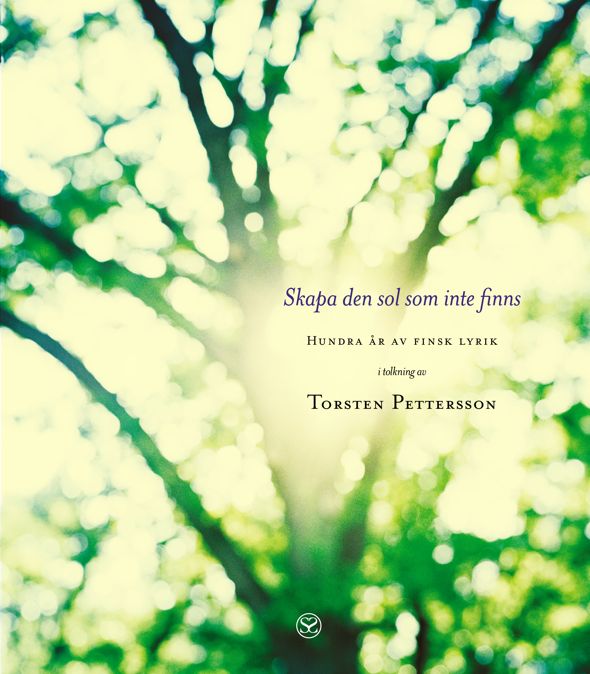 Torsten Pettersson
Torsten Pettersson
Skapa den sol som inte finns. Hundra år av finsk lyrik i tolkning av Torsten Pettersson
[Create the sun that is not there. A hundred years of Finnish poetry in Swedish translations by Torsten Pettersson]
Helsinki: Schildts & Söderströms, 2012. 299 p.
ISBN 978-951-52-3034-8
€25, paperback
In the 1960s my mother sometimes used to amuse herself and us children by reciting, in Finnish, in our bilingual family, selected lines of verse from the half-forgotten poetry canon of her school years.
Eino Leino (died 1926) and the great tubercular geniuses Saima Harmaja, Uuno Kailas, Katri Vala and Kaarlo Sarkia (all dead by 1945) were familiar names to me as a child. Early on, I realised that their poetry was both profoundly serious and also slightly silly, just because of its high-flown seriousness. More…
Umayya Abu-Hanna: Multikulti. Monikulttuurisuuden käsikirja [Multiculti. A handbook of multiculturalism]
17 January 2013 | Mini reviews, Reviews
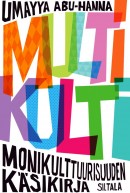 Multikulti. Monikulttuurisuuden käsikirja
Multikulti. Monikulttuurisuuden käsikirja
[Multiculti. A handbook of multiculturalism]
Helsinki: Siltala, 2012. 229 p.
ISBN 978-952-234-064-1
€ 24.90, paperback
Umayya Abu-Hanna is a Palestinian-born journalist and writer who lived in Finland for a long time and is now resident in Amsterdam. She has received awards for her work as an expert on multiculturalism. Finland’s migrant population is constantly growing, and Multikulti is aimed particularly at workers in Finland’s cultural sector; it may also be useful to others as a polemical handbook. Written in fluent, if flawed, Finnish, it contains practical instructions, tasks, and themes for discussion for those who deal with migrants. On the basis of her own experience and that of others Abu-Hanna shows clearly how migrants from outside Europe, especially Africans and Muslims, but also those who come to Finland from closer to home, encounter prejudice, racism, an involuntary lack of understanding and a lack of ‘cultural literacy’. Faults are evident at all levels of society, including the state’s cultural administration.
Translated by David McDuff
The Dancing Bear Poetry Prize goes to a first work
17 January 2013 | In the news
 The Dancing Bear Poetry Prize, worth €3,500, is awarded annually by Yleisradio, the Finnish Broadcasting Company, to a book of poetry published the previous year.
The Dancing Bear Poetry Prize, worth €3,500, is awarded annually by Yleisradio, the Finnish Broadcasting Company, to a book of poetry published the previous year.
This year’s winner – announced on 16 January – is Maria Matinmikko (born 1983) for her first collection, Valkoinen (‘White’, Ntamo). The prize has been awarded since 1994.
The winner was selected by a jury of two journalists, Tarleena Sammalkorpi and Marit Lindqvist, the culture editor Minna Joenniemi and the poet Sinikka Vuola. In their opinion, the publishing of poetry – Finnish and translated – is getting more dependent on small, dedicated publishers.
The jury found the winning work ‘a delicate, suggestive series of consecutive and simultaneous spaces transversing each other…. The layout, with the speakers of the text and the leitmotiv – the colour white, whiteness – form an exciting, spacious surface….’
In addition to the Dancing Bear Poetry Prize, the Finnish Broadcasting Company also awards a prize for the best poetry translation., worth €1,000. This time the winner is translator Jukka Mallinen, specialised in Russian contemporary literature, for his two translations: Punainen auringonlasku (‘Red sunset’) by the Belarussian poet Vladimir Nekljajev and Joulupaasto (‘Christmas fast’, on the siege of Leningrad) by Sergei Zavyalov. The jury commented that the poems have been translated with a passion typical to Mallinen, whose work is based on a profound knowledge of Russian literature.
Matti Klinge: Kadonnutta aikaa löytämässä. Muistelmia 1936–1960 [Finding lost time. Memoirs 1936–1960]
10 January 2013 | Mini reviews, Reviews
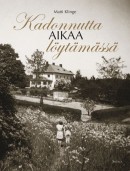 Kadonnutta aikaa löytämässä. Muistelmia 1936–1960
Kadonnutta aikaa löytämässä. Muistelmia 1936–1960
[Finding lost time. Memoirs 1936–1960]
Helsinki: Siltala, 2012. 557 p., ill.
ISBN 978-952-234-136-5
€31.95, hardback
Professor (Emeritus) Matti Klinge (born 1936) is a prolific historian who has specialised in the history of culture and ideas as well as in the debate on contemporary culture; he has also published 12 volumes of his diaries. In this fascinating volume of memoirs, inspired by writer Marcel Proust, he gives a detailed account of his childhood, schooldays and military service as well as his years of active study, shedding light on the cultural and social life of his time, from the point of view of Helsinki’s educated bourgeoisie, and draws telling character sketches of his contemporaries. The cultural heritage is reflected in the world of Klinge’s values and in his language. This handsomely produced book contains plenty of illustrative material ranging from entrance tickets and works of art to the jacket pictures of books important to the author and photographs. The volume lacks an index of personal names, which will hopefully be added to the final part of the work.
Translated by David McDuff
More light! Mehr Licht!
10 January 2013 | In the news
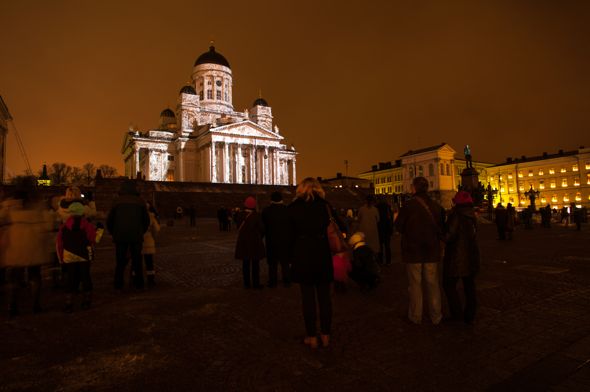
Light and colour: ‘Emergence’ by Casa Magica. Photo: Lux Helsinki / Hannu Iso-oja
With the winter solstice now over, the darkness will begin to diminish, albeit very slowly: additional artificial light is still much appreciated. Fiat lux! The early days of the new year Lux Helsinki (from 4 to 8 Jan) brought light and colour to the city-dwellers in the form of 13 light installations in various parts of the city.
The Cathedral was lit by the German duo Casa Magica – light designers Friedrich Förster and Sabine Weißinger – whose work entitled ‘Emergence’ painted the church with fantastic shapes and colours. One of the works was an illuminated, silvery tram – unfortunately it was not possible to get on board though.
Among the other works of light art was the recently opened and very popular Baana, an old train track now serving as a passageway for cyclists and pedestrians through the city centre: the creation entitled ‘Reveal’ by the London-based media artist Dan Shorten made the stone walls change colour and the total mood of Baana.
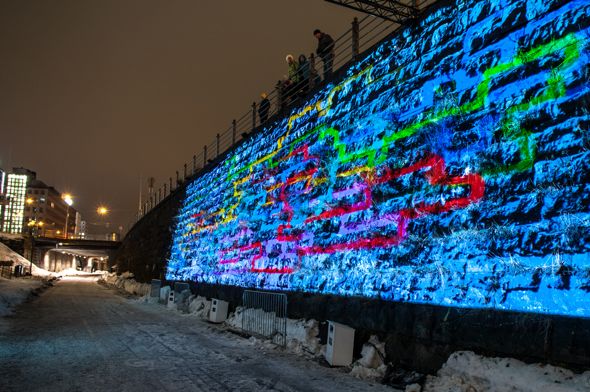
Paint with colour: ‘Reveal’ by Dan Shorten. Photo: Lux Helsinki / Hannu Iso-oja
A pity Lux Helsinki – staged now for the fifth time – lasts for a few days only, as it will take a while for the increase of daylight to be apparent….
Bear necessities
10 January 2013 | This 'n' that
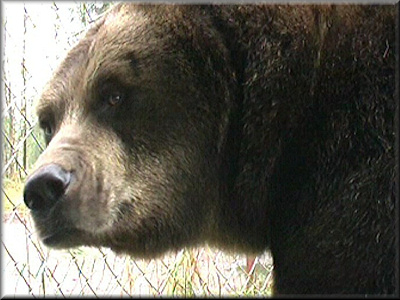
Ursus arctos: Juuso the bear. Photo: The Predator Centre, Kuusamo
In our odd quiet moments we occasionally amuse ourselves by checking out what’s happening in the bear village of Kuusamo, in the north-east of Finland, by watching ‘bear TV’ (the bears speak Finnish only with the staff, but the link offers plenty of expressive action without words).
The brown bear (Ursus arctos) – feared, respected and even mythical animal of the ancient Finns – can weigh more than 400kg. It can run fast (60km/h) and scare the pants off people in the woods, although it always avoids humans if possible. There are approximately 900–1300 wild bears in Finland. This large, intelligent beast hibernates from October to April. Omnivorous, it eats meat as well as plants and berries – carrots, too, if it can lay its paws on them.
Kuusamon suurpetokeskus (The Predator Centre) in Kuusamo has given home to several bears who have lost their mother when cubs or injured in accidents. The bears regard Sulo Karjalainen, their carer – beartaker? – their dear pal, or even mum.
It is really heart-warming to watch him and Pasi Jäntti socialising with their furry friends, who politely – or occasionally slightly rudely – devour the healthy treats that they are given in exchange for posing in several little home movies on their ‘bear TV’ website. In them, the endearing giants – Juuso, Niisku, Vyöti and others – lick Sulo’s cheek, have a bath, and Juuso tests a specially made bear weighing machine and, getting sleepy, a man-made lair with Sulo, his dear pal.
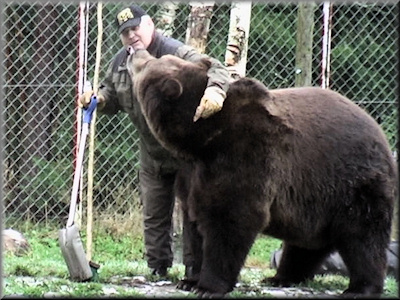
Beartaker at work: Sulo and his 400+-kilo friend. Photo: The Predator Centre, Kuusamo
Dangerous? Texts on the videos point out that only the staff can enter the bears’ home.
Sulo bears a scar on his cheek, yet he is perfectly fearless. With the largest mammal in Europe, there is a risk involved…
